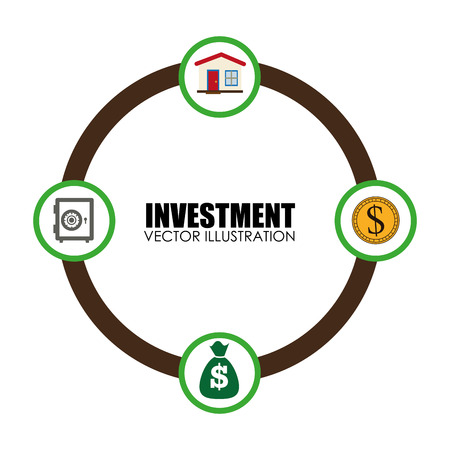1. Understanding Depreciation and Its Role in Tax Planning
Depreciation is an essential concept in business tax planning. It allows businesses to spread the cost of an asset over its useful life instead of deducting the entire expense in the year of purchase. This approach helps manage cash flow and reduces taxable income, ultimately lowering the amount owed in taxes.
What Is Depreciation?
Depreciation is the process of allocating the cost of a tangible asset over its expected useful life. Instead of taking a full deduction when purchasing equipment or property, businesses can claim a portion of the cost each year as an expense.
Common Types of Depreciable Assets
- Machinery and equipment
- Vehicles used for business purposes
- Office furniture
- Buildings (but not land)
- Computers and software
Why Does Depreciation Matter?
Depreciation plays a crucial role in tax planning because it provides businesses with a way to recover costs while reducing taxable income. By strategically using depreciation methods, businesses can minimize tax liability and reinvest savings into growth.
How Depreciation Impacts Business Taxes
The IRS allows businesses to deduct depreciation expenses from their taxable income, which lowers the total tax burden. The method used for depreciation can influence how much is deducted each year. Here’s a comparison of common depreciation methods:
| Depreciation Method | Description | Best For |
|---|---|---|
| Straight-Line Depreciation | Spreads the asset’s cost evenly over its useful life. | Businesses wanting consistent deductions each year. |
| Declining Balance Depreciation | Allows larger deductions in the early years. | Companies needing higher deductions upfront. |
| Section 179 Deduction | Permits immediate full deduction of qualifying assets up to a limit. | Small businesses looking to maximize upfront deductions. |
| Bonus Depreciation | A percentage of eligible assets can be deducted in the first year. | Businesses purchasing large amounts of new equipment. |
Key Takeaways on Depreciation and Tax Benefits
- Depreciation spreads out asset costs over time, reducing annual taxable income.
- The IRS provides different depreciation methods that can impact tax liability differently.
- Selecting the right depreciation strategy can improve cash flow and maximize tax benefits.
Understanding how depreciation works is critical for effective tax planning. By leveraging depreciation, businesses can optimize their financial strategy, reduce tax burdens, and reinvest savings into growth opportunities.
2. Types of Depreciation Methods and Their Benefits
Choosing the right depreciation method can significantly impact your business’s tax benefits. Below are some common depreciation methods and their advantages.
Straight-Line Depreciation
Straight-line depreciation is the simplest method, where an assets cost is evenly distributed over its useful life.
How It Works:
- Divide the assets cost by its useful life in years.
- Deduct the same amount each year until the asset is fully depreciated.
Benefits:
- Easy to calculate and apply.
- Provides consistent deductions over time.
- Ideal for assets with steady usage and wear.
Declining Balance Depreciation
This method accelerates depreciation by allowing larger deductions in the early years of an asset’s life.
How It Works:
- A fixed percentage is applied to the remaining book value each year.
- The deduction decreases over time as the asset’s value reduces.
Benefits:
- Larger tax savings in the initial years.
- Better matches expenses with revenue for rapidly depreciating assets.
- Useful for businesses needing higher upfront deductions.
Section 179 Deduction
Section 179 allows businesses to deduct the full cost of qualifying assets in the year they are purchased rather than spreading it out over multiple years.
How It Works:
- You can deduct up to a specific limit set by the IRS in the year of purchase.
- This applies to eligible business equipment, software, and vehicles.
Benefits:
- Immediate tax relief for large purchases.
- Boosts cash flow by reducing taxable income quickly.
- Encourages reinvestment in business growth.
Comparison of Depreciation Methods
| Depreciation Method | Main Benefit | Best For |
|---|---|---|
| Straight-Line | Simplifies accounting with equal deductions every year | Assets with consistent use over time |
| Declining Balance | Larger deductions early on, reducing taxable income faster | Assets that lose value quickly or generate more revenue initially |
| Section 179 | Immediate full deduction in the first year | Businesses wanting quick tax relief for large purchases |
Selecting the right depreciation method depends on your business goals, cash flow needs, and tax strategy. Understanding these options helps you maximize tax benefits while aligning with your financial planning.

3. Leveraging Bonus Depreciation and Section 179 Deductions
Understanding how bonus depreciation and Section 179 deductions work can help you accelerate write-offs and reduce your taxable income. These tax provisions allow businesses to deduct a significant portion of asset costs in the year they are placed into service, rather than spreading deductions over several years.
How Bonus Depreciation Works
Bonus depreciation allows businesses to immediately deduct a percentage of eligible asset costs in the first year of use. This provision is especially useful for companies that invest heavily in equipment, machinery, or technology.
Key Features of Bonus Depreciation
- Immediate Deduction: Businesses can deduct a large percentage (up to 100% in certain years) of qualifying asset costs upfront.
- No Cap on Spending: Unlike Section 179, there is no upper limit on the amount that can be deducted through bonus depreciation.
- Applies to New and Used Assets: Previously, only new assets qualified, but now both new and used assets may be eligible.
- Phase-Out Schedule: The percentage of bonus depreciation allowed is gradually decreasing in upcoming years.
Understanding Section 179 Deductions
The Section 179 deduction allows businesses to deduct the full purchase price of qualifying equipment and software in the year it is placed into service, rather than depreciating it over time.
Section 179 vs. Bonus Depreciation
| Feature | Section 179 Deduction | Bonus Depreciation |
|---|---|---|
| Deductions Limit | Capped annually (adjusted by IRS) | No spending cap |
| Asset Type | Mainly tangible personal property and some improvements | Tangible property including new & used assets |
| Deductions Timing | Elected by business owner | Automatically applied unless opted out |
| Deductions Percentage | Capped at a fixed dollar amount annually | A percentage of asset cost (gradually phasing out) |
(1) Key Benefits of Section 179 Deductions
- Cuts Taxes Immediately: Instead of waiting years for depreciation deductions, businesses can reduce taxable income right away.
- Easier Budgeting: Knowing that large purchases will provide immediate tax relief helps with financial planning.
- Certain Improvements Qualify: Some non-structural building improvements, such as HVAC systems, may also be eligible.
- You Control the Deduction: Unlike bonus depreciation, businesses can choose how much Section 179 deduction they want to take within limits.
(2) Choosing Between Bonus Depreciation and Section 179
Your choice between these two methods depends on your business needs and financial situation. If you need maximum flexibility in deductions, Section 179 may be preferable. If you’re making large capital investments beyond Section 179 limits, bonus depreciation could provide additional benefits.
(1) When to Use Section 179 Over Bonus Depreciation?
- If you want control over how much you deduct in one year.
- If you buy assets that qualify under Section 179 but not under bonus depreciation rules.
- If youre looking for immediate tax relief while staying within IRS-set limits.
(2) When to Use Bonus Depreciation Over Section 179?
- If you exceed the spending cap for Section 179 deductions.
- If you purchase used assets that qualify under bonus depreciation but not under Section 179.
- If your business has substantial profits and needs significant tax savings right away.
The combination of bonus depreciation and Section 179 deductions provides businesses with powerful tools to manage tax liabilities efficiently. Understanding when and how to use these provisions can lead to significant savings while ensuring compliance with tax regulations.
4. Common Mistakes to Avoid When Claiming Depreciation
Depreciation is a valuable tax-saving tool, but if done incorrectly, it can trigger IRS audits or result in lost tax benefits. To maximize your deductions and stay compliant with tax laws, avoid these common mistakes when claiming depreciation.
(1) Incorrectly Classifying Assets
Different assets have different depreciation schedules. Misclassifying an asset can lead to incorrect deductions and potential issues with the IRS.
| Asset Type | Depreciation Method | Typical Recovery Period |
|---|---|---|
| Office Equipment | MACRS (Straight-Line or Declining Balance) | 5-7 years |
| Commercial Buildings | Straight-Line Method | 39 years |
| Residential Rental Property | Straight-Line Method | 27.5 years |
| Vehicles | Straight-Line or MACRS with limits | 5 years |
(2) Failing to Track Asset Usage Properly
If you use an asset for both business and personal purposes, you can only claim depreciation on the business portion. Failing to track this accurately could result in disallowed deductions.
(A) Best Practices:
- Maintain detailed records: Keep logs of how each asset is used.
- Avoid estimating usage: Use actual data instead of rough estimates.
- Update records regularly: Ensure your records reflect changes in asset usage.
(3) Overlooking Bonus Depreciation and Section 179 Deduction
The IRS allows businesses to accelerate depreciation through bonus depreciation and Section 179 deductions, but many businesses fail to take full advantage of these provisions.
(A) Key Differences:
| Deductions Type | Description | Main Limitation |
|---|---|---|
| Bonus Depreciation | You can deduct a large percentage of the asset’s cost upfront. | No income limit, but rules may change annually. |
| Section 179 Deduction | You can deduct the entire purchase price of qualifying equipment in the first year. | Capped at an annual limit; subject to taxable income limitations. |
(4) Using Outdated Tax Rules for Depreciation Calculations
The IRS periodically updates tax laws related to depreciation. If youre using outdated methods, you could be missing out on deductions or making errors that lead to audits.
(A) How to Stay Updated:
- Consult a tax professional: They can provide guidance on current regulations.
- Check IRS publications: The IRS updates its guidelines regularly.
- Use updated accounting software: Ensure your tools are aligned with current tax laws.
(5) Forgetting to Adjust for Asset Disposals or Sales
If you sell, retire, or dispose of an asset before it’s fully depreciated, you must adjust your depreciation calculations accordingly. Failing to do so can lead to inaccurate tax filings.
(A) What You Should Do:
- Record the sale or disposal date: Include it in your financial records.
- Add any gain or loss from the transaction:
- Avoid continuing depreciation on disposed assets:
Avoiding these common mistakes ensures you maximize your tax benefits while staying compliant with IRS regulations. Proper recordkeeping and awareness of changing tax laws are crucial for accurate depreciation claims.
5. Strategic Tax Planning to Maximize Depreciation Benefits
Implementing a strategic tax plan can help your business maximize depreciation benefits and reduce taxable income. By aligning major purchases with tax-saving opportunities, you can ensure that your company takes full advantage of depreciation deductions. Here’s how you can effectively plan for long-term tax savings.
Understanding Depreciation Strategies
To optimize depreciation benefits, businesses should consider different methods and timing strategies that align with their financial goals. Below are key depreciation strategies:
| Depreciation Strategy | Description | Best For |
|---|---|---|
| Straight-Line Depreciation | Spreads the cost evenly over the useful life of the asset. | Businesses looking for predictable expenses. |
| Accelerated Depreciation (MACRS) | Larger deductions in the early years of an asset’s life. | Companies wanting to reduce taxable income quickly. |
| Section 179 Deduction | Deductions up to a certain limit for qualifying assets in the first year. | Small businesses needing immediate tax relief. |
| Bonus Depreciation | A percentage deduction (e.g., 80% in 2023) on new or used assets upfront. | Larger purchases with significant upfront costs. |
Key Steps for Strategic Tax Planning
(1) Plan Asset Purchases Around Tax Years
If youre considering purchasing new equipment or property, timing your purchases strategically before year-end can help maximize deductions in the current tax year.
(2) Take Advantage of Section 179 and Bonus Depreciation
The Section 179 deduction allows businesses to deduct the full purchase price of qualifying equipment, while bonus depreciation offers additional savings. Understanding these options helps you make informed purchasing decisions.
(3) Work with a Tax Professional
A CPA or tax advisor can help identify the best depreciation method based on your business structure and cash flow needs. They can also ensure compliance with IRS regulations while optimizing savings.
(4) Keep Accurate Records of Asset Purchases
Mistakes in asset classification or record-keeping can lead to lost deductions. Maintain detailed records, including purchase dates, costs, and expected useful life to support your depreciation claims.
(5) Evaluate Future Business Growth and Cash Flow Needs
Your depreciation strategy should align with long-term business goals. If you anticipate higher income in future years, spreading out deductions may be more beneficial than taking them all upfront.


